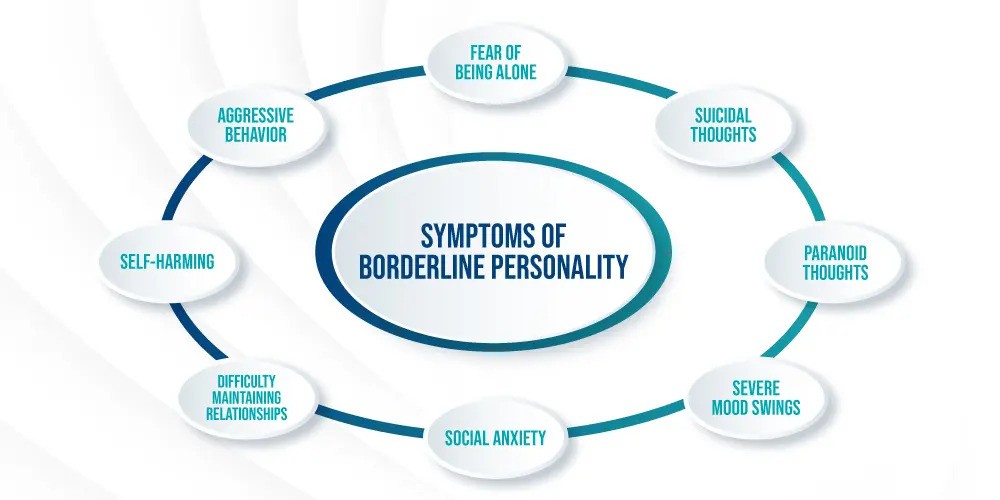Typically, referring to a person as having Borderline Personality Disorder (BPD) suggests there is no way to help them from themselves. There are definitely stereotypes of people with BPD, including that they are “manipulative” or “attention-seeking,” that they are “dangerous” or “unstable,” and they are unable to “form healthy relationships.”1 According to the Diagnostic Statistical Manual of Mental Disorders 5th edition (DSM-V), a person cannot be diagnosed as having BPD until they are at least 18 years of age.2 One of the many reasons is because we know how children “try on” different styles of dress, different ways of thinking, and different styles of music as they work to define themselves. Most commonly, saying a person has BPD also suggests they are extremely difficult with whom to work.

In the United States, the prevalence of BPD among men and women appears to be similar in the general population. Epidemiological studies indicate that approximately 5.6% of men and 5.2% of women are affected by BPD, suggesting no significant gender difference in prevalence rates. However, in clinical settings, women are more frequently diagnosed with BPD, accounting for about 75% of cases. This discrepancy may be due to women being more likely to seek mental health treatment or potential biases in diagnostic practices.3 Studies have shown that BPD is moderately heritable, with research suggesting that genetics may account for about 40-60% of the risk for developing the disorder.4 However, BPD is influenced by a combination of genetic, environmental, and social factors. Environmental factors, such as childhood trauma, abuse, or neglect, as well as temperament and other personality traits, also significantly contribute to the likelihood of developing BPD.
While genetic predisposition may increase vulnerability, it is typically the interaction of genes and environment that leads to the full expression of BPD symptoms. Otto Kernberg, a prominent psychoanalyst, defines BPD as a condition characterized by identity diffusion, where individuals lack a stable sense of self and experience conflicting self-images and impulses. He views BPD as marked by intense, unstable interpersonal relationships, stemming from difficulties in integrating positive and negative aspects of people and situations, often leading to polarized “all good” or “all bad” perceptions. Kernberg also emphasizes that BPD involves chronic affective instability, impulsive behavior, and primitive defense mechanisms, such as splitting, which contribute to the instability in emotions and relationships.
There really is no medication that treats BPD specifically. The best that can be done is to treat co-occurring symptoms, including severe depressive illness that is recurring, an anxiety disorder, and quite often at least one substance use disorder. Because of the latter common co-occurring illness, the use of ketamine has long been frowned upon. In my own practice, worries about an addiction also have a lot of “depth” and with such understanding, ketamine therapy may be warranted.
Axis II diagnoses, as classified in earlier versions of the DSM, referred to personality disorders and intellectual disabilities. These were seen as more ingrained and enduring than Axis I disorders (like mood, anxiety, or psychotic disorders), which were often viewed as more acute or treatable. The kind of psychotherapy with the greatest amount of statistical support is Dialectical Behavior Therapy (DBT), developed specifically for individuals with BPD by psychologist Marsha Linehan.5 DBT has been extensively researched and shown to be highly effective in reducing key BPD symptoms, such as emotional dysregulation, self-harm, and suicidal behavior. Overall, research shows that DBT significantly reduces symptoms and improves quality of life for people with BPD, making it the most widely recommended and statistically supported treatment. Also, like other kinds of group therapy, sometimes it takes two or three “tries” until a person starts to better appreciate the skills and help with emotional development.
Footnotes
- Zanarini, M. C., Frankenberg, F. R., Hennen, J., & Silk, K. R. (2003). The impact of borderline personality disorder on quality of life. The American Journal of Psychiatry, 160(2), 274-283.
- American Psychiatric Association. (2013). Diagnostic and Statistical Manual of Mental Disorders (5th ed.). Washington, DC: Author.
- Skodol, A. E., & Bender, D. S. (2003). Why are women diagnosed borderline more than men? Psychiatric Quarterly, 74(4), 349-360.
- Amad, A., Ramoz, N., Thomas, P., Jardri, R., & Gorwood, P. (2019). Genetics of borderline personality disorder: Systematic review and proposal of an integrative model. Neuroscience and Biobehavioral Reviews, 98, 85-97.
- Linehan, M. M. (1993). Cognitive-Behavioral Treatment of Borderline Personality Disorder. New York, NY: Guilford Press.
—
Harrison Levine, MD, MPH




